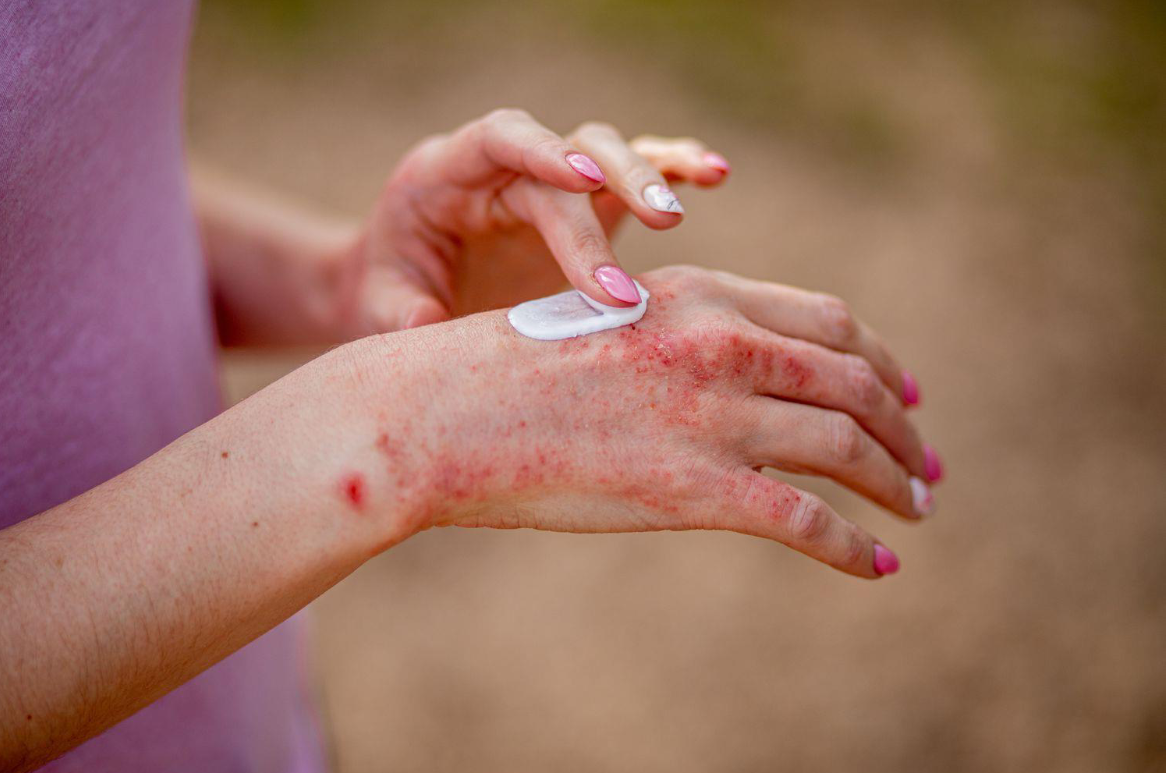
Eczema, also known as atopic dermatitis, is a chronic, relapsing inflammatory skin disorder characterized by dry, itchy, and inflamed patches. Globally, it affects a significant proportion of the population, with prevalence varying by age and region. Studies within the Gulf Cooperation Council (GCC) countries indicate a notable burden of the condition. For instance, a study in Dubai, UAE, indicated a prevalence of 4-5%. Studies in Saudi Arabia have shown varying prevalence rates, with one study of children aged 6-12 years reporting 14% physician-diagnosed atopic dermatitis. These figures highlight the substantial impact of eczema on individuals and healthcare systems within the GCC. The region’s unique environmental challenges, including an arid climate, frequent sandstorms, intense UV exposure, and the widespread use of air conditioning, alongside cultural practices, necessitate a tailored approach to eczema management.
Eczema arises from a complex interplay of skin barrier dysfunction and immune dysregulation.
Barrier Defect: Genetic factors, particularly mutations in the filaggrin (FLG) gene, lead to a reduction in key structural proteins within the skin’s outer layer (epidermis). This compromised barrier function results in increased transepidermal water loss (TEWL) and enhanced penetration of irritants and allergens. In the dry GCC climate and with the lipid-stripping effects of sweat and air conditioning, this barrier defect is often exacerbated.
Immune Response: The penetration of allergens triggers an abnormal immune response, predominantly involving the Th2 pathway. This leads to the release of pro-inflammatory cytokines such as interleukin-4 (IL-4) and interleukin-13 (IL-13), which further impair skin barrier function by downregulating proteins like filaggrin and loricrin, and perpetuate the cycle of inflammation and itching.
Management strategies for eczema aim to alleviate itching and inflammation, repair the skin barrier, and prevent future flares:
Metabase Cream’s carefully balanced formula supports eczema-prone skin in five key ways:
It is important to consult a dermatologist if:
Effective eczema management requires a comprehensive, proactive approach. This involves identifying and avoiding personal triggers, carefully maintaining the skin barrier with appropriate emollients, seeking timely medical care for flares and complications, and adopting consistent daily skincare habits. By increasing awareness, providing access to tailored treatment strategies, and emphasizing long-term management, people with eczema can experience significant relief and enjoy a better quality of life.
Don’t let eczema take control. Discover how Metabase Cream’s intensive care can help soothe your skin and restore comfort.